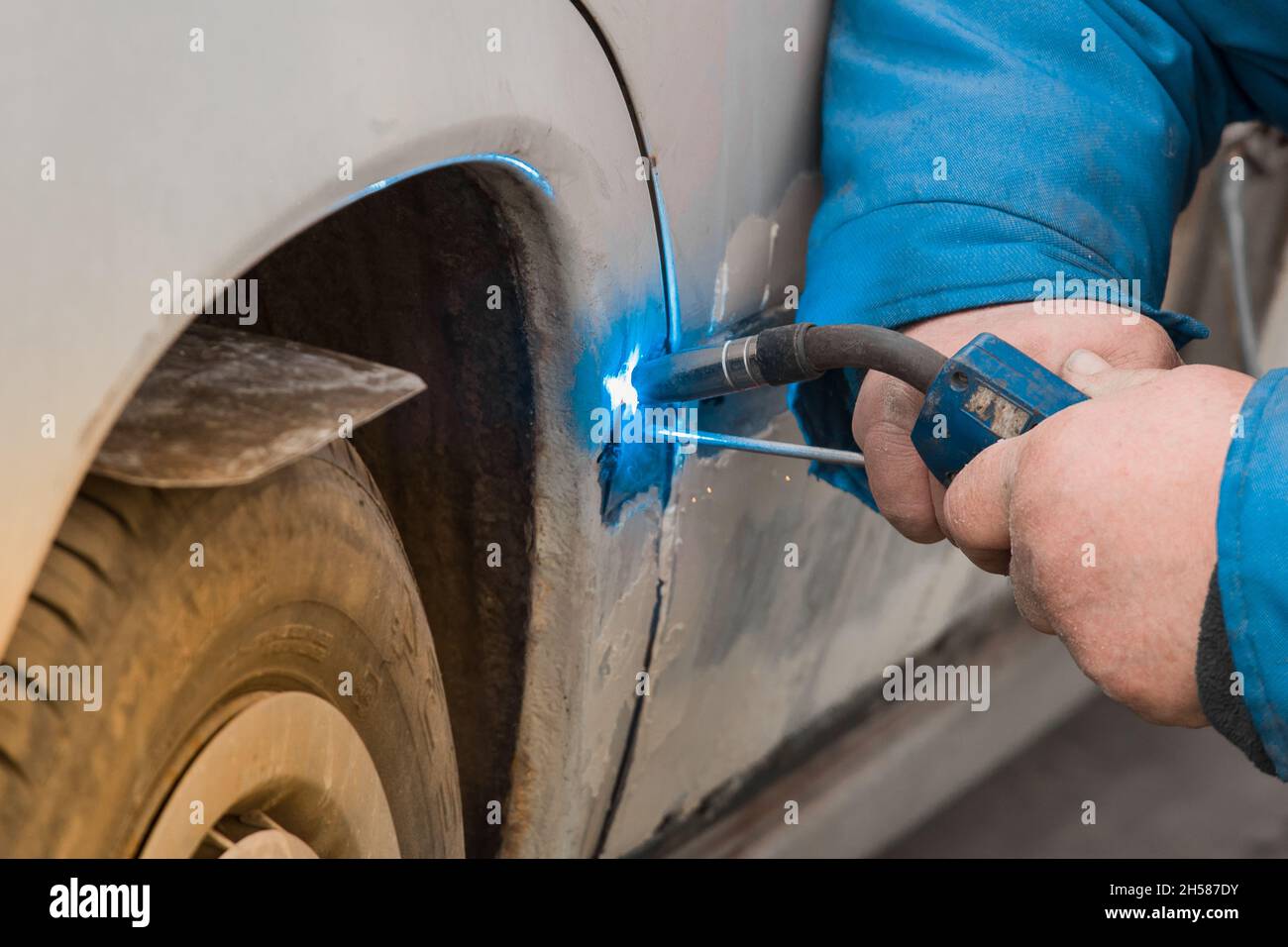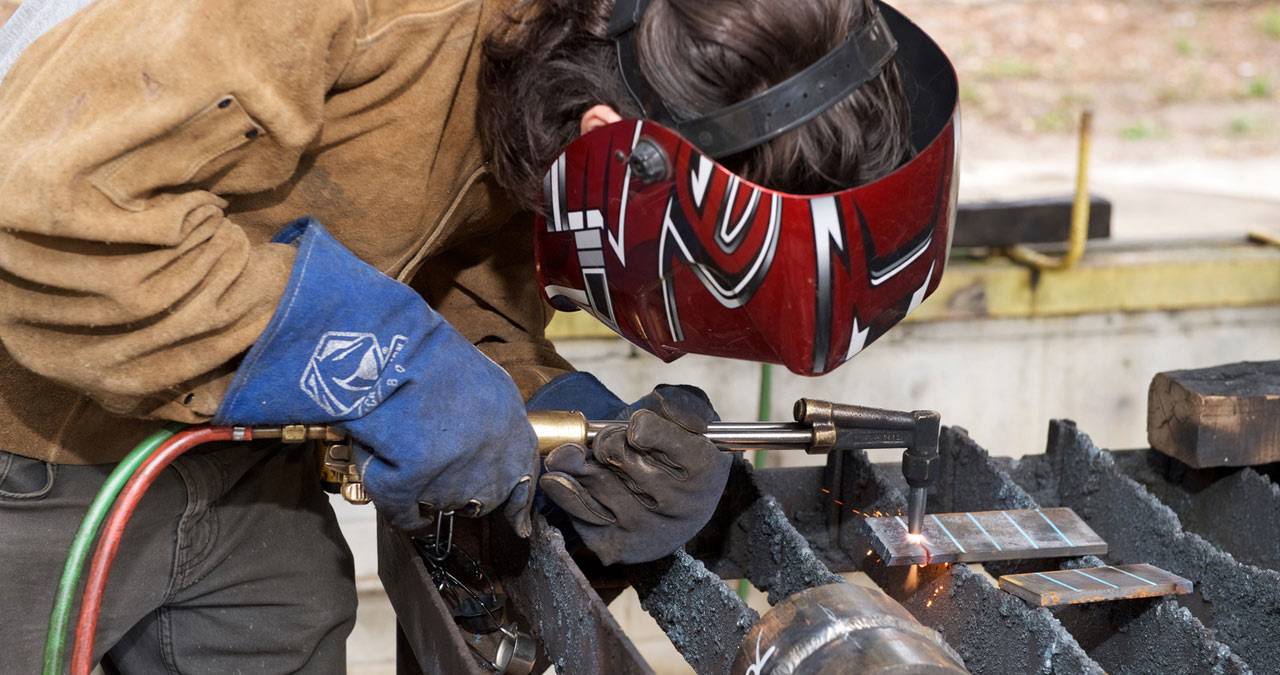Everything about Welding: Key Insights Into Techniques and Finest Practices for Success
Welding includes a range of techniques, each fit for specific materials and applications. Understanding these methods, such as GMAW, SMAW, and TIG, is vital for achieving suitable results. The right tools and security techniques can not be overlooked. As preparation and troubleshooting play essential duties in the welding procedure, grasping these components can considerably boost the high quality of the end product. What are the crucial factors that guarantee an effective weld?
Understanding Different Welding Techniques
Welding strategies include a range of approaches, each fit to particular applications and materials. Amongst one of the most typical methods are Gas Metal Arc Welding (GMAW), Shielded Metal Arc Welding (SMAW), and Tungsten Inert Gas Welding (TIG) GMAW, also understood as MIG welding, is preferred for its speed and adaptability, making it ideal for thin products. SMAW, or stick welding, is preferred for its simplicity and performance in outside atmospheres, particularly with thicker steels. TIG welding supplies precision and control, making it appropriate for complex job and non-ferrous metals (Montana Mobile Welding and Repair Fabrication). Each method has its unique benefits and factors to consider, permitting welders to select the very best technique based on the task's demands, product type, and preferred end results. Understanding these techniques is necessary for successful welding
Necessary Welding Tools and Devices
While different welding techniques require certain abilities, the appropriate equipment and devices are just as essential for accomplishing top quality results. Crucial welding devices includes welding machines, which vary relying on the strategy-- such as MIG, TIG, or stick welding. Protective equipment, including handwear covers, aprons, and safety helmets, warranties security and comfort throughout the process. On top of that, clamps and fixtures aid safeguard materials in position, making sure precision in welds. Consumables like welding poles, cord, and protecting gas are additionally important parts that affect the top quality of the weld. Furthermore, tools such as grinders and cutters promote surface prep work and post-weld finishing, contributing to a professional result. Investing in top notch tools eventually improves the performance and performance of welding projects.
Safety Practices in Welding
Appropriate security practices are essential in the welding sector to secure employees from possible threats. Welders have to wear ideal personal protective equipment (PPE), including headgears with correct shading, gloves, and flame-resistant apparel. Sufficient ventilation is vital to minimize direct exposure to damaging fumes and gases produced throughout the welding procedure. In addition, workers need to be learnt the appropriate handling of welding devices to stop mishaps. Fire precaution, such as keeping flammable products away from the welding area and having fire extinguishers readily available, are needed. Regular assessments of tools and work spaces can assist identify prospective hazards prior to they result in crashes. By sticking to these safety and security practices, welders can produce a more secure working environment and decrease dangers connected with their profession.
Readying Materials for Welding
Preparing materials for welding is a crucial step that greatly influences the high quality and honesty of the end product (Fabrication). Appropriate preparation involves cleansing the surface areas to eliminate pollutants such as corrosion, dust, and oil, which can jeopardize the weld. Techniques such as grinding, sanding, or using solvents are generally used to attain a clean surface. Furthermore, making sure that the materials mesh comfortably is crucial; spaces can cause weak welds. It's additionally important to think about the placement and positioning of the components, as this will certainly influence the convenience of welding and the final result. Selecting the suitable filler product and making certain compatibility with the base steels is essential for attaining strong, resilient welds.
Tips for Achieving High-Quality Welds
Attaining top quality welds needs attention to detail and adherence to best practices throughout the welding procedure. Appropriate joint prep work is necessary, guaranteeing surface areas are tidy and complimentary from contaminants. Picking the proper filler material and welding strategy based on the base steels is crucial for excellent bonding. Keeping consistent travel speed and angle while welding can avoid issues and advertise harmony. In addition, regulating heat input is essential; too much warm can bring about warping and compromised joints. If essential, on a regular basis evaluating the welds during the procedure enables for immediate adjustments. Ultimately, using proper post-weld therapies, such as cleaning and stress alleviation, can boost the durability and integrity of the weld, eventually making sure an effective result.
Repairing Common Welding Issues
Welding frequently presents obstacles that can influence the high quality and honesty of the final product. Common issues such as porosity, inconsistent weld beads, and getting too hot can develop, each needing specific troubleshooting strategies. Understanding these issues is important for welders to improve their skills and achieve optimal outcomes.
Porosity Troubles Clarified
Although porosity can usually be overlooked, it continues to be a vital concern in welding that can jeopardize the integrity of an ended up item. Porosity refers to the visibility of tiny gas pockets within the weld grain, which can lead and damage the joint to premature failing. This problem usually occurs from pollutants, moisture, or improper protecting gas protection throughout the welding procedure. To mitigate porosity, welders need to validate that the base materials are tidy and completely dry, utilize ideal securing gases, and maintain consistent welding parameters. Regularly examining the equipment and environment can also aid recognize potential problems prior to they materialize in the weld. Resolving porosity successfully is crucial for attaining solid, sturdy welds that fulfill quality criteria.

Irregular Weld Beads
Inconsistent weld grains can substantially impact the quality and toughness of a finished product. Numerous aspects add to this concern, consisting of improper traveling speed, inaccurate amperage setups, and inconsistent electrode angles. When the welder relocates as well quickly, a grain might appear slim and lack infiltration, while moving as well gradually can cause excessive buildup. Additionally, making use of the incorrect amperage can result in either damaging or extreme spatter, both of which concession weld integrity. The welder's technique, such as irregular lantern movement, can likewise bring about uneven bead look. To reduce these problems, welders need to concentrate on preserving constant, regulated motions and making sure appropriate devices settings to attain uniformity in their welds. Uniformity is crucial to achieving solid and trusted welds.
Overheating and Warping Issues
Too much warmth during the welding process can lead to significant overheating and warping concerns, impacting the architectural integrity of the work surface. These issues typically materialize as distortion, which can jeopardize placement and fit-up, making additional assembly testing. Factors browse this site adding to overheating include the option of welding parameters, such as voltage and travel speed, in addition to the type of product being bonded. To alleviate these problems, welders should preserve regular travel speed and suitable heat input while checking the work surface temperature. Additionally, preheating or post-weld warm therapy can help alleviate anxieties created by rapid air conditioning - Welding. Regular assessment and adherence to ideal practices are crucial in preventing getting too hot and making certain the longevity and integrity of welded frameworks
Regularly Asked Concerns
What Are the Occupation Opportunities in the Welding Industry?
The welding market offers varied profession opportunities, consisting of settings as welders, inspectors, instructors, and engineers. Experts can function in manufacturing, building and construction, aerospace, and automobile fields, benefiting from solid need and affordable salaries in different functions.
Just How Can I Improve My Welding Speed Without Compromising High Quality?
To enhance welding rate without sacrificing top quality, one need to practice reliable techniques, maintain devices, enhance settings, and boost hand-eye control. Normal training and looking for responses can also substantially add to achieving quicker, top quality welds.
What Certifications Are Offered for Welders?
Many certifications exist for welders, including those from the American Welding Culture (AWS), the National Center for Building Education and Research Study (NCCER), and numerous industry-specific organizations. These qualifications enhance employability and show ability efficiency.
Just How Does Welding Impact the Qualities of Metals?
Welding affects the homes of metals by modifying their microstructure, which can result in adjustments in solidity, ductility, and toughness. Warm input and cooling prices during the process substantially impact these product attributes.
Can I Bonded Dissimilar Metals Together?

Comments on “Common problems explained and solved by Montana Mobile Welding and Repair Belgrade Fabrication”